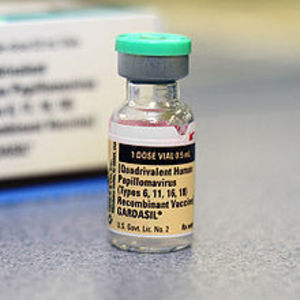Endocrine disruptors are chemicals that interfere with the body’s endocrine (hormonal) system. They can affect everything from normal development, reproductive fertility to neurological health. Unfortunately, endocrine disruptors are everywhere in our society. And there are many different types.
Some examples of endocrine disruptors include dioxin, PCBs, DDT, other pesticides and bisphenol A (BPA). Many of us have heard of the risks associated with various pesticides and the BPA in our plastics. These little guys can hide out everywhere – in our household cleaners, personal care products and cookware.
Endocrine Disruptors and Polycystic Ovarian Syndrome (PCOS)
PCOS is characterized by a group of signs and symptoms. These include excess androgens, insulin resistance, cysts on the ovaries, hirsutism (excess hair growth), acne, weight gain, irregular periods, depression and more. As PCOS is a hormonal disorder, anything that effects our production and/or filtration of hormones (like endocrine disruptors) will affect PCOS. Many studies have been conducted around this very topic.
Bisphenol A (BPA). Let’s talk about one of the most prevalent and widely-researched endocrine disruptors: bisphenol A. BPA is a chemical generally used in plastics and the lining of some metal items. For the consumer, BPA is found mostly in the lining of cans, plastic water bottles and containers. Now, this may not sound too bad but the BPA in these containers can seep into your food and drink- posing serious health risks.
Just a few of the many health risks associated with BPA exposure include:
- Reduced number of oocytes (eggs in our ovaries)
- Lowers successful number of births
- Heightens stress response and anxiety
- Increases testosterone
- Reduces function of estrogen receptors
- Developmental problems in fetuses and children
- Impaired glucose metabolism (blood sugar problems)
- Cancer
PCOS and BPA
Fetal Exposure. Several studies have been conducted to test the connection between BPA use or exposure and polycystic ovarian syndrome. What scientists have estimated is that a woman is much more likely to develop PCOS if there was BPA exposure as a fetus. This means that if your mother used canned foods lined with BPA or lots of BPA-containing plastic containers and bottles during her pregnancy, it could have contributed to your PCOS[i][ii].
Increased Testosterone. These studies have also show that BPA exposure leads to increased levels of testosterone. The reason for this is because BPA exposure is linked to decreased filtration of testosterone. A few studies have noticed this correlation.
Estrogen Dominance. Another connection between PCOS and BPA is an increase in estrogen production. Remember, there are many types of synthetic estrogens, but the most prominent endogenous (those made by the body) estrogens include: estrone, estradiol and estriol (high in pregnancy). Generally in PCOS, testosterone and estradiol reign high, with the body unable to produce enough progesterone. This can create what has been called estrogen dominance[iii]. This is bad news for women trying to balance their hormones.
BPA and other endocrine disrupting chemicals contain estrogen-mimicking compounds (xenoestrogens) that increase our body’s supply of the hormone. As we know, approximately 50% of women with PCOS are overweight. These xenoestrogens are fat-soluble, meaning that they get stored in fat. So, the more overweight a woman is, the more likely her symptoms of PCOS and estrogen dominance will be severe.
Glucose Metabolism. There is one more way that endocrine disruptors are bad for women with PCOS, and that is glucose metabolism. Insulin resistance and blood sugar issues are extremely common in women with PCOS[iv]. Scientists have discovered that endocrine disruptor exposure alters glucose metabolism and pancreatic function[v]. The pancreas is our blood-sugar-regulating hub, so this is bad news. Risk of developing diabetes is also heightened.
How to Avoid and Detox Endocrine Disruptors
Glass Cookware and Food Storage. Many of the endocrine disruptors we are exposed to are in some way related to our foods. Canned foods often have a BPA liner on the inside, which seeps into our food. We store our food in plastic containers and bottles that are made with BPA. It’s important to find alternatives to these storage methods to reduce our exposure.
Try using glass storage containers and bakeware instead of plastic. Glass is sturdy, easy-to-clean and can last a lifetime. A small investment in glass storage will go a long way to reducing your exposure. Another thing to try is avoiding cans lined with BPA. Generally, companies won’t tell you if a can is lined with BPA, but the ones that don’t use it will put it on the label. Not sure? Avoid canned foods altogether and only use fresh foods.
Whole Foods Diet. We all know we should eat for health and that whole foods are better than packaged foods, but how many of us are really doing this? We lead such busy lives it can be difficult to grasp the concept of cooking fresh, from scratch. If you are concerned about exposures to endocrine disruptors, eating fresh foods will drastically reduce your exposure. And for a bonus, – use organic fruits, vegetables, dairy products and meats wherever possible. Endocrine disruptors are also in the pesticides, hormones and antibiotics used to cultivate conventional foods[vi]. Still not sure? Why not try purchasing a share of a local farm that you trust. These are called CSAs, or community-supported agriculture. You pay a fee and get a weekly box of fresh goodies during the growing season.
Natural Remedies for Exposure to Endocrine Disruptors
Sweat. The skin is our largest organ. It’s also one of the ways our bodies detoxify. When you sweat regularly, the body is able to filter and release excess toxins, chemicals, hormones and other substances- this includes BPA. Sweat regularly through exercise, saunas and hot baths. But make sure to rehydrate your body with pure, clean water afterwards!
Lemon Water. Speaking of hydration, pure, filtered water is a huge helper for our bodies in filtering toxins. When we drink warm water with fresh lemon juice upon waking, it helps our bodies release toxins that is has filtered while we were sleeping. It also helps to set our digestion for the day, so we are better able to prevent toxins from getting into our bloodstream in the first place.
DIM. Diindolymethane (DIM) is an antioxidant and phytonutrient compound found in brassica family vegetables. These include broccoli, Brussel sprouts, cauliflower, cabbage and kale. Studies have shown DIM to have superior abilities to reduce excess estrogens and risk of some female cancers such as breast cancer[vii]. This is a supplement that could be useful for women with PCOS who have estrogen overload due to endocrine disruptors. DIM will safely bring the estrogens back into balance and restore healthy tissues. This can be helpful in hormonal weight gain, excess androgens and PMS issues.
Probiotics. Probiotics are “friendly” bacteria that reside in our gut. They help to regulate our immune system, digestion and so much more. They have become quite popular lately and are added to a variety of foods. Probiotics can also be taken in supplement form.
Probiotics detoxify endocrine disruptors like BPA because they are able to break them down[viii]. When this happens, those harmful chemicals are excreted through our bowels. Some examples of probiotic foods to include in your diet every day are plain, unsweetened yogurt, kefir, kombucha, raw, unpasteurized sauerkraut, kimchi or pickles, and raw apple cider vinegar.
BPA and other endocrine disruptors can wreak havoc on women with PCOS, and may even contribute to the syndrome developing in the first place. Prevent further complications from these chemicals by balancing your hormones, losing weight if necessary and enjoying a whole foods diet full of phytonutrients like DIM. And don’t forget to avoid sources of BPA like plastic containers and food cans as much as possible. When you take care to do these steps, PCOS may become more manageable.
References
[i] Eleni Kandaraki, Antonis Chatzigeorgiou, Sarantis Livadas, Eleni Palioura, Frangiscos Economou, Michael Koutsilieris, Sotiria Palimeri, Dimitrios Panidis, and Evanthia Diamanti-Kandarakis. Endocrine Disruptors and Polycystic Ovary Syndrome (PCOS): Elevated Serum Levels of Bisphenol A in Women with PCOS. The Journal of Clinical Endocrinology & Metabolism 2011 96:3 , E480-E484.
[ii] Evanthia Diamanti-Kandarakis, Jean-Pierre Bourguignon, Linda C. Giudice, Russ Hauser, Gail S. Prins, Ana M. Soto, R. Thomas Zoeller, and Andrea C. Gore. Endocrine-Disrupting Chemicals: An Endocrine Society Scientific Statement. Endocrine Reviews 2009 30:4 , 293-342.
[iii] Slater, W. (n.d.). The Role of Estrogen Dominance in PCOS (Polycystic Ovarian Syndrome). Retrieved November 16, 2014, from http://www.ovarian-cysts-pcos.com/estrogen-dominance.html
[iv] Dach, J. (2014, May 19). PCOS, BPA and Endocrine Disruptors Part Three. Retrieved November 15, 2014, from http://jeffreydachmd.com/2014/05/pcos-bpa-endocrine-disruptors-part-three/
[v] Evanthia Diamanti-Kandarakis, Jean-Pierre Bourguignon, Linda C. Giudice, Russ Hauser, Gail S. Prins, Ana M. Soto, R. Thomas Zoeller, and Andrea C. Gore. Endocrine-Disrupting Chemicals: An Endocrine Society Scientific Statement. Endocrine Reviews 2009 30:4 , 293-342.
[vi] Evanthia Diamanti-Kandarakis, Jean-Pierre Bourguignon, Linda C. Giudice, Russ Hauser, Gail S. Prins, Ana M. Soto, R. Thomas Zoeller, and Andrea C. Gore. Endocrine-Disrupting Chemicals: An Endocrine Society Scientific Statement. Endocrine Reviews 2009 30:4 , 293-342.
[vii] A Super-supplement for Hormone Balance: DIM. (n.d.). Retrieved November 16, 2014, from http://blog.healthybynaturehwc.com/2013/08/06/a-super-supplement-for-hormone-balance-dim/
[viii] Gallaghan, H. (2013, December 5). 7 Ways to Drain BPA From the Body. Retrieved November 19, 2014, from http://www.activistpost.com/2013/12/7-ways-to-drain-bpa-from-body.html
About the Author. Robyn Srigley is the The Hormone Diva, holistic nutritionist, author and speaker. Robyn helps women replace anxiety with joy to open possibility in their lives and have a positive impact on the next generation. Robyn’s struggle with PCOS helps her with clients suffering from PMS, PCOS, Endometriosis and much more.
Web: http://www.thehormonediva.com
Facebook: http://www.facebook.com/thehormonediva
Twitter: http://www.twitter.com/thehormonediva
Pinterest: http://www.pinterest.com/thehormonediva













Hi my name is Kim.
Im interested to find out why i have appearing lumps in my foot, groin, head & throat.. Ive been using Modere products now for 16 years and have been on system 2 for 6 months.
and have been on the phase 1 for 2 years .. Dr has resently said i have infected lymphatic system & golen staff .. on antibiotics at minute awaiting blood test .. antibiotics havent done anything to lumps so ill be having ultrasounds now .. Is there something you can sugest ?
kind regards Kim Hinton